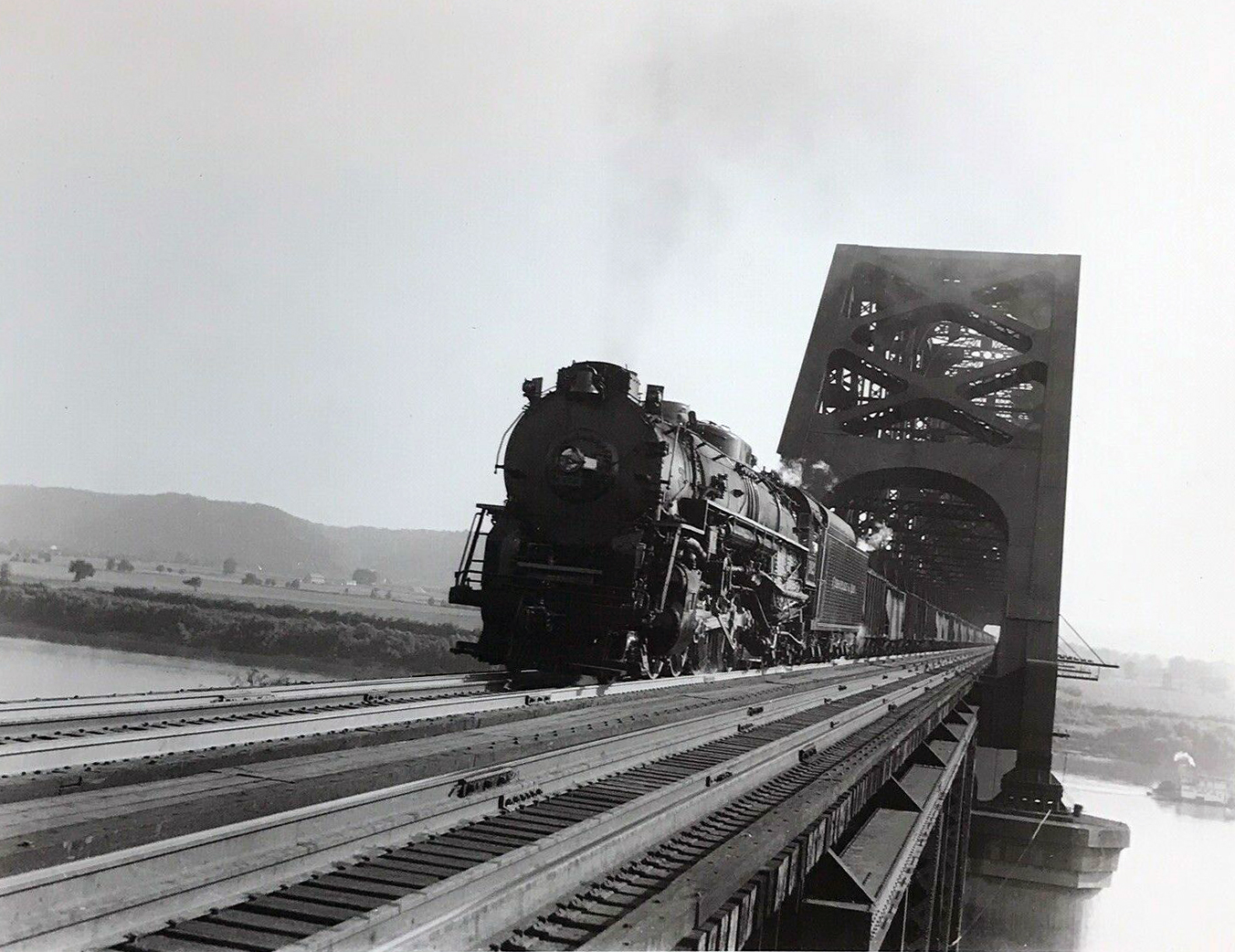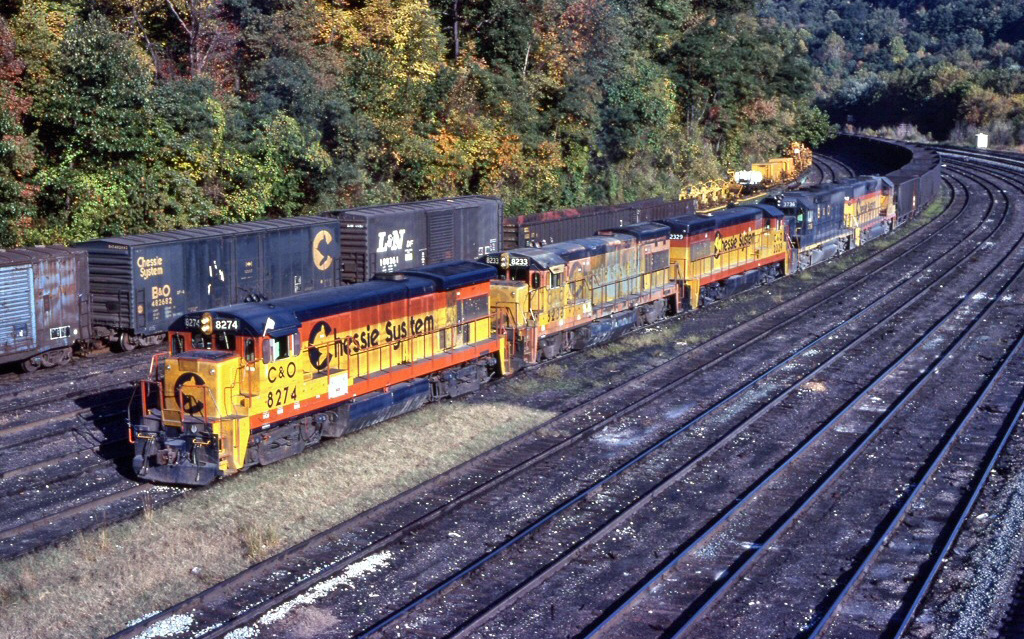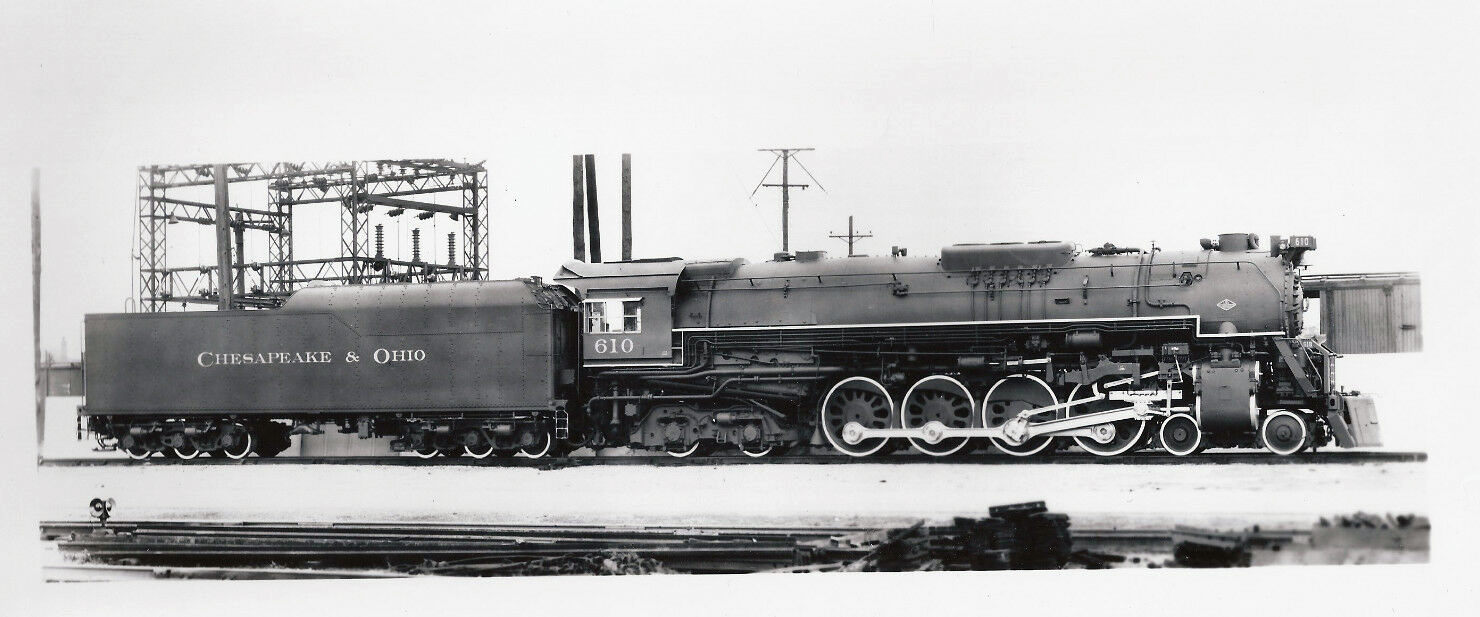B&O 4-6-4 Locomotives: Specs, Roster, Photos
Published: April 9, 2025
By: Adam Burns
The 4-6-4 wheel arrangement is best known on the New York Central, which designed the locomotive and came to own a sizable fleet of beautifully designed machines.
The Baltimore & Ohio as it turns out, which is never really known for operating Hudsons, did utilize a small fleet for passenger service. They were listed as Class V and constructed by the railroad's own shop forces in Mount Clare during the mid-1930s.
The locomotive's were equipped with a specialized firebox designed by a noted company engineer and were considered successful while in service. They remained on the B&O's roster until 1950 when all were retired and eventually scrapped.
The 4-6-4 was a popular arrangement on many roads, such as the Milwaukee Road, Chicago & North Western, New York Central, and Santa Fe. The B&O, however, had little interest in the design. Instead, it utilized primarily 4-6-2's and 4-8-2's on passenger assignments until the diesel era.
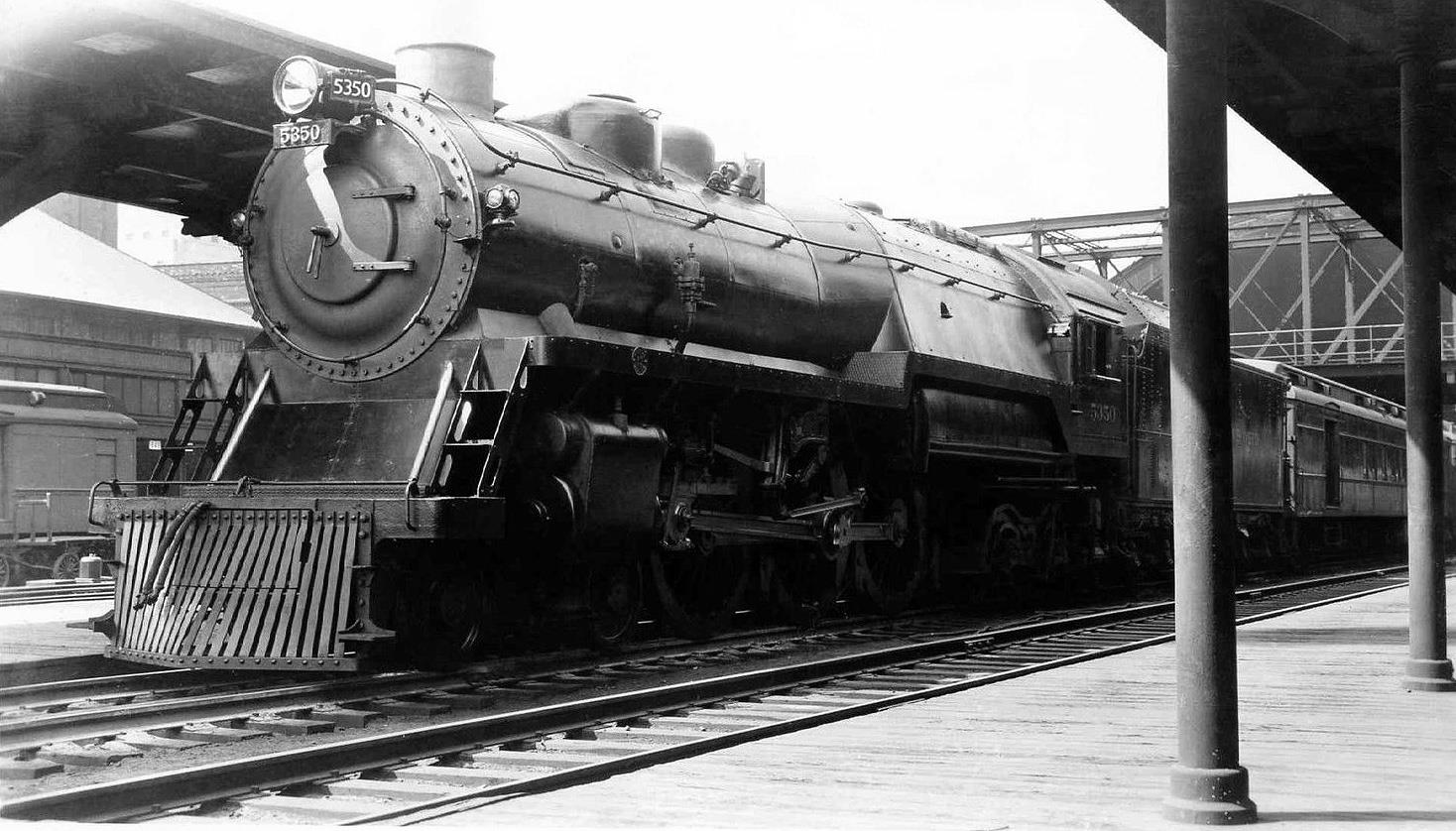 Baltimore & Ohio 4-6-4 #5350 (V-3), which carried a European-like streamlining. The railroad owned a total of four, the second of which (#5340, Class V-2) was named "Lord Baltimore" and assigned to the "Royal Blue" (Baltimore - New York). The B&O's Hudsons used an interesting watertube firebox patented by General Superintendent of Motive Power & Equipment, Colonel George H. Emerson.
Baltimore & Ohio 4-6-4 #5350 (V-3), which carried a European-like streamlining. The railroad owned a total of four, the second of which (#5340, Class V-2) was named "Lord Baltimore" and assigned to the "Royal Blue" (Baltimore - New York). The B&O's Hudsons used an interesting watertube firebox patented by General Superintendent of Motive Power & Equipment, Colonel George H. Emerson.It's tough to argue that the New York Central fielded some of the most gorgeous Hudsons ever put into service. Who can ever forget those iconic Class J3a's styled by Henry Dreyfuss to pull the initial version a streamlined 20th Century Limited.
Some other roads to field fleets of classic 4-6-4s included the Canadian Pacific's Royal Hudsons, Chicago & North Western's Class E-4's, the Milwaukee Road's lightening fast Class F-7's which headed the streamlined Hiawathas, and the Wabash's small fleet of Class P1's.
Colonel George H. Emerson
The Baltimore & Ohio's use of the Hudson was much more subtle, and some reading this may not even be aware the railroad ever owned any. As was typical, and in many ways expected on the B&O, the locomotive's carried an elegance and grace albeit were perhaps not the most beautiful designs it ever owned.
However, interestingly their use came about in part due to a newly patented firebox by the railroad's General Superintendent of Motive Power & Equipment, Colonel George H. Emerson.
He had joined the B&O during March of 1920 and before he left the company became revered for his work with steam power. During 1927 Emerson employed the first use of a watertube firebox in a locomotive when the B&O's Mount Clare Shops in Baltimore rebuilt a Consolidation into a Mikado.
A year later it did the same with a Class P-7 Pacific named the President Cleveland (part of the fabled President's Class). The watertube design was inspired by similar devices used in marine ships and stationary power plants.
According to Kirk Reynold's and Dave Oroszi's book, "Baltimore & Ohio Railroad," they differed from a "...conventional locomotive firebox in that boiler water circulated through a series of tubes that were arranged vertically at the sides of the firebox, thus eliminating staybolts and crown sheets."
Classification
| Model | Builder | Road Number(s) | Date Built | Tractive Effort | Drivers | Disposition |
|---|---|---|---|---|---|---|
| Class V-1 | B&O | 5047 | 1933 | 52,000 Pounds | 74 Inches | Scrapped, 1950 |
| Class V-2 | B&O | 5340 | 1935 | 34,000 Pounds | 84 Inches | Scrapped, 1949 |
| Class V-3 | B&O | 5350 | 1935 | 52,000 Pounds | 80 Inches | Scrapped, 1950 |
| Class V-4 | B&O | 5360 | 1936 | 52,000 Pounds | 80 Inches | Scrapped, 1950 |
The second Hudson, numbered 5340, was semi-streamlined and named Lord Baltimore where it found work pulling the B&O's elegant and newly lightweight Royal Blue between Baltimore and New York.
The third and fourth in the series were put into service between 1935-36 and could often be found hustling passenger trains anywhere along the Cumberland, Pittsburgh and Akron Divisions.
All of the Hudsons carried large main drivers (between 74 and 84 inches) allowing them to cruise at high speeds.
Retirement
The B&O's 4-6-4s were considered successful locomotives although Emerson was never able to fully complete his watertube firebox tests. The locomotives continued to pull passenger trains until 1949-1950 when all four were retired and eventually scrapped.
It could be reasonably argued that the B&O's Hudsons were not the most aesthetically pleasing steam locomotives it ever produced, a result of the big watertube fireboxes they employed.
While the steamers did carry semi-streamlining their appearance was more closely associated with English-built designs that carried a no-frills, utilitarian look.
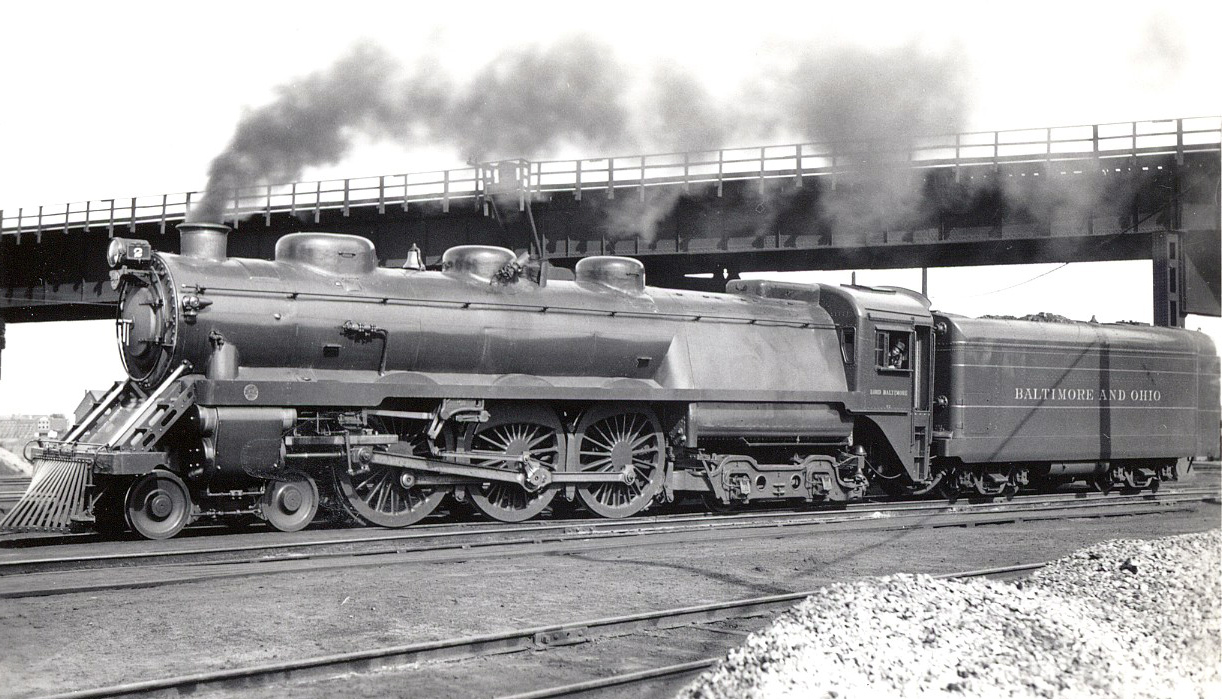 Baltimore & Ohio 4-6-4 #5350 (V-3), which carried a European-like streamlining. The railroad owned a total of four, the second of which (#5340, Class V-2) was named "Lord Baltimore" and assigned to the "Royal Blue" (Baltimore - New York). The B&O's Hudsons used an interesting watertube firebox patented by General Superintendent of Motive Power & Equipment, Colonel George H. Emerson.
Baltimore & Ohio 4-6-4 #5350 (V-3), which carried a European-like streamlining. The railroad owned a total of four, the second of which (#5340, Class V-2) was named "Lord Baltimore" and assigned to the "Royal Blue" (Baltimore - New York). The B&O's Hudsons used an interesting watertube firebox patented by General Superintendent of Motive Power & Equipment, Colonel George H. Emerson.The railroad constructed a few other locomotives this way, its one and only example of a 4-4-4-4 Duplex Drive (#5600), as well as the 4-4-4 "Lady Baltimore." In any event, this is purely rhetorical.
Sadly, no examples of Emerson's watertube designs were ever preserved (others included the previously mentioned Duplex and Pacific, a Mikado, a pair of 4-8-2s, and a pair of 2-6-6-2 Mallets) and he left the company during January of 1942.
Recent Articles
-
C&O 2-10-4 Locomotives: Specs, Roster, Photos
Apr 13, 25 04:07 PM
Chesapeake & Ohio's T-1s included a fleet of forty 2-10-4 "Texas Types" that the railroad used in heavy freight service. None were preserved. -
Chesapeake and Ohio Railway: Map, Logo, History
Apr 13, 25 04:07 PM
The Chesapeake and Ohio Railway was a famous southern line that operated from Norfolk to Chicago and through much of Michigan. -
C&O 4-8-4 Locomotives: Specs, Roster, Photos
Apr 12, 25 09:52 PM
Chesapeake & Ohio's fleet of 4-8-4s, listed as Class J-3/a, included twelve examples of 4-8-4s the railroad termed "Greenbriers." Today, #614 survives.
